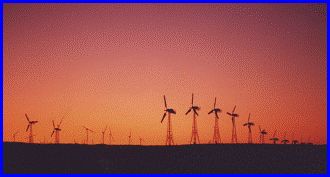Are Today's Skies That Much Worse than they used to Be?
Jack Kramer
Of course, the short answer to that is yes, the skies are certainly worse when it comes to light pollution. Anyone who has been observing for a couple of decades can attest to that based on how deep sky objects used to look. But when it comes to the effects of air pollution, the answer may be somewhat different, especially if we go back far enough ... really far.
A few years ago I wrote an article for our newsletter about Charles Messier and his familiar list of deep sky objects. In the course of researching some facts about Messier's observations, I found that he had to contend with conditions that were not quite as pristine as we might imagine. Certainly, he had the advantage of darker skies, but his telescopes were not of a quality comparable to what anyone of us now uses. And they were not that large; his favorite was a 90mm refractor. Moreover, coal and wood were the common fuels for heating and cooking in 1760 when he began compiling his list of "nebulae", so he had to contend with a good deal of smoke, especially during the colder months. Today we refer to it as smog.
This inquiry into observing conditions hundreds of years ago leads in some unexpected directions. Earth science historians tell us that climactic conditions during medieval times were favorable, but things cooled off roughly during the period 1560 to 1850, giving rise to what is referred to as the "Little Ice Age". The need to keep warm accelerated the burning of fossil fuels. There isn't much scientific documentation of sky conditions, but various researchers have examined paintings of the period to see how artists portrayed the sky. One researcher, Hans Neuberger, surveyed over 12,000 paintings dated from 1400 to 1967. What was found is that the blue color of the sky underwent a noticeable decline. Impressionist paintings of cities in winter show a definite yellow hue, and some artists, notably Monet and Pissaro, depict skies as generally hazy. There are also frequent depictions of cloudiness and darkness.
Along this same line, other researchers have examined paintings that specifically focus on sky phenomena to infer the atmospheric conditions of the time. Glowing colors hint at airborne particulates. One good example is Joseph Turner (1775-1851), an English landscape painter noted for his studies of light, color, and atmosphere. Many of his paintings included sunsets, and it has been concluded that the use of glowing colors shows the effects of sunlight scattered off dust from the eruption of the Indonesian volcano Tambora on April 10, 1815.
Some of you may recall that in the early 1990's, observing conditions were affected by particulates from the eruption of Mount Pinatubo in the Philippines. But this did result in some beautiful sky colors - what became known as "Pinatubo sunsets". I took the following photo of wind-powered electric generators near Pleasanton, California in 1992. The sky color has not been enhanced in any way.

Well, perhaps this long ramble has made you feel a little better about our skies. Weather conditions on a macro scale appear to have undergone cyclical changes throughout recorded history. Sky conditions weren't always so ideal in the "good old days", especially if you lived in a populated area. Today we're more aware of our effect on the environment, so maybe energy conservation and a concern for air quality is paying off for us amateur astronomers. If you set out to observe the 110 objects that Charles Messier included in his list, you should have no trouble, so long as your site is not hopelessly awash in skyglow from shopping centers. Now if we can just do something about light pollution...
Published in the April 2006 issue of the NightTimes




